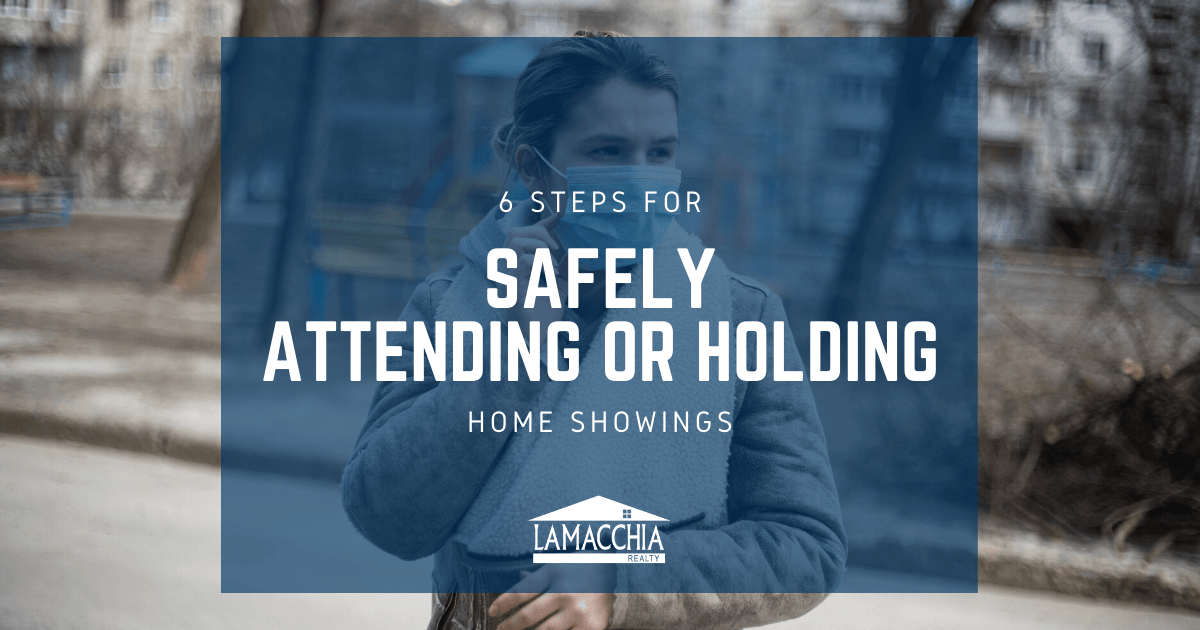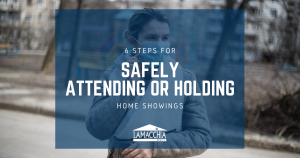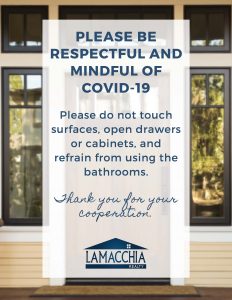
 There are hundreds of reasons why people choose to buy or sell a home when they do. Some may like to anticipate and outsmart the market while others simply are left with no choice but to buy or sell immediately. Even during the COVID-19 outbreak, the same rules apply. Some may choose to wait until after the virus subsides while others may choose or simply have no choice but to buy or sell during this unprecedented time.
There are hundreds of reasons why people choose to buy or sell a home when they do. Some may like to anticipate and outsmart the market while others simply are left with no choice but to buy or sell immediately. Even during the COVID-19 outbreak, the same rules apply. Some may choose to wait until after the virus subsides while others may choose or simply have no choice but to buy or sell during this unprecedented time.
Homes are still being bought and sold during these trying times, but the process does look different. In order to ensure the safety of everyone involved, there are some new steps that must be taken in order to safely buy or sell a home. We recently put out a recommendation the speaks directly at Realtors, with 10 Steps for Holding a Safe Showing. It is still valuable for consumers to understand the role they play in practicing safe home buying and selling during this time.
Since we published 10 Steps for Holding a Safe Showing last month, which speaks directly to Realtors, we’ve gathered additional information and concluded that these are the steps that buyers and sellers should be aware of. We are not doctors, or lawyers, or infectious disease professionals but after a lot of discussion and research on CDC recommendations, we did come up with what we think is the best way to do this so that homes can be shown while this threat still exists, which may continue for several months. On May 1st, Governor Baker mandated that everyone wear cloth face coverings for the foreseeable future when out in public. We believe that they should be worn even after that mandate is lifted.
Buyers should be doing everything they can to minimize exposure or the potential spread of COVID-19 while attending showings. The steps below are recommended so that all buyers can stay safe and also respect the safety of sellers during the home buying process.
Buyer Safety Tips:
- Confirm with the listing agent that no one in the home has shown any symptoms of COVID-19. If you or anyone you’ve been in contact with has symptoms, please do not attend any showings until the CDC recommended time has passed for quarantine.
- Be flexible about your showing time and possibly only having access to attend showings during certain time frames. Please only go to see a home if you are seriously interested in making an offer. The listing agent may only allow shortened showings per group which last around 10 minutes depending on how many other groups are there to see the home.
- Likely, most of the relevant doors and lights in the home will already be open and on to ensure you do not have to touch anything in the home in orderly to fully see it. Please do not touch any light switches, door nobs cabinet knobs, or anything with the exception of a railing if necessary. Please refrain from using the bathrooms.
- You must wear a mask or face covering to fully protect yourself and others. It may also be required that you wear gloves or booties over your shoes.
- If there are other people at the property for a showing, be prepared to wait outside until it’s your turn and while waiting, remain 6 feet apart. Likely only small groups will be allowed in the property at one time.
- Should you choose to attend the showing with a buyer’s agent, the agent may need to remain outside during the showing in order to limit foot traffic.
Our Lamacchia Realty Realtors have been following these suggested guidelines, as depicted by the infographic to the right. As a seller, you should be working with a Realtor who has set these parameters in place in order to keep you and your family protected during showings. Sellers should follow the recommended steps below and keep in mind that most agents at this point may have new ways of holding showings and controlling the crowd as a means to keep everyone as safe as possible.
Seller Safety Tips:
- It may go without saying, but you should not offer showings in a home in which someone has shown symptoms of COVID-19
- If possible, having one or two showing blocks on different days is the best way to do it. As we said in our Realtor recommendations, it is very important that your Realtor take control. Tours should be brief, with groups of no more than 2-4 people, and everyone should remain 6 feet apart at all times. By limiting your showing blocks, you only need to do one thorough deep clean after the potential buyers leave.
- Have your Realtor post two signs: one right outside the door that reads, “Showings will be done in groups with the listing agent. Please do not enter until the listing agent invites you.” Then, one right inside the door that everyone who comes in will immediately see: “PLEASE BE RESPECTFUL AND MINDFUL OF COVID-19. Please do not touch surfaces, open drawers or cabinets, and refrain from using the bathrooms. Thank you for your cooperation.”
- Leave the doors and closets open that you want to be shown, this way no one will have to touch a doorknob to open it themselves. As well, leave lights on so that no one touches light switches.
- It is required that people wear face masks or coverings in public and asking people to do so when they enter your home will only further ensure the safety of you and them. Offering booties to cover shoes and asking people to wear gloves are also recommended ways to be safe when holding a showing.
- Once the last group leaves, either you or your Realtor should wipe all of the doorknobs, railings, and doors by hand with sanitizing wipes just to be extra careful.
For more information on the real estate market and how COVID-19 continues to play a role, view our COVID-19 Resource Page.
Disclaimer- This document was created by Anthony Lamacchia and several other members of Lamacchia Realty. None of them claim to be lawyers, doctors or medical professionals. Realtors are free to use this as a guide, but it is in no way a guarantee of any sort. All Realtors should consult with their own Brokers, lawyers, medical professionals local or state or even federal boards of health or centers for disease control.



